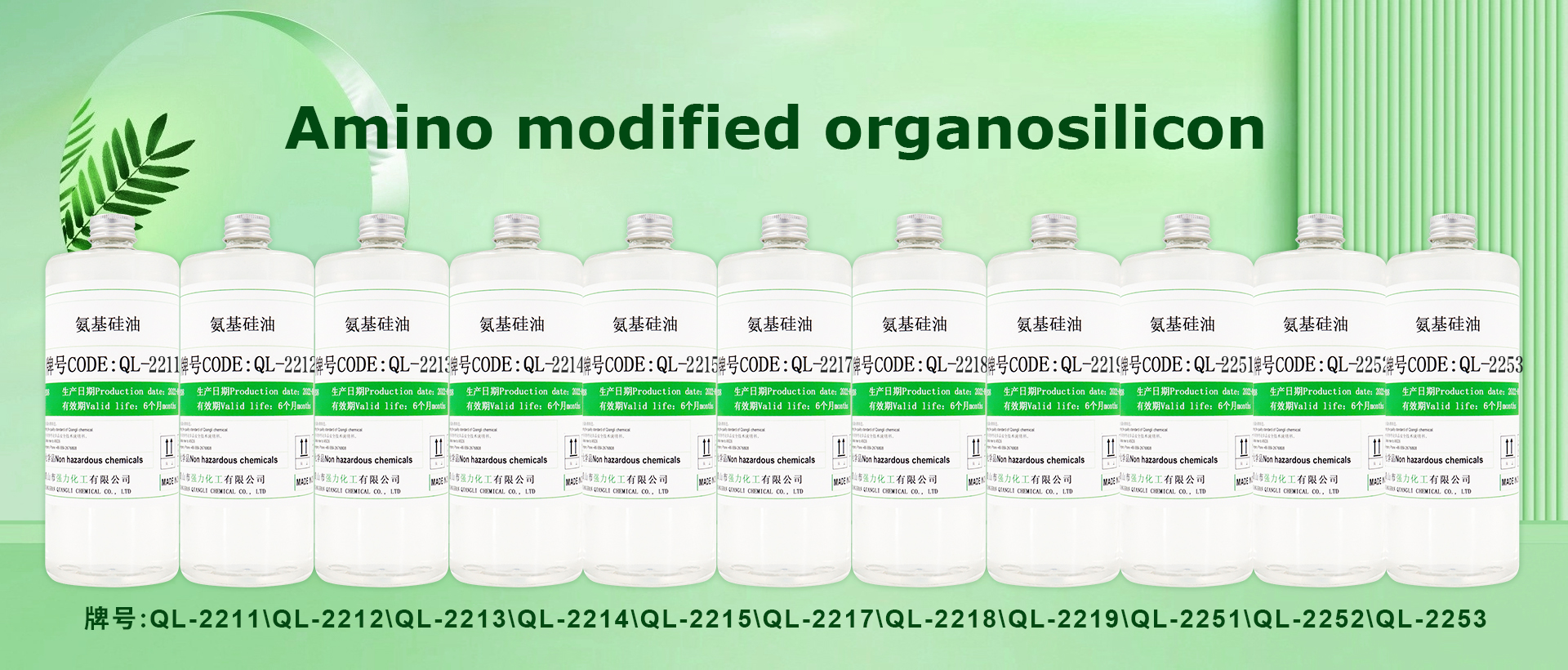The addition amount of amino silicone oil in acrylic resin needs to be comprehensively considered based on factors such as material performance requirements, compatibility, and cost. The requirements for the addition amount vary in different application scenarios, which are described in detail as follows:
I. Influence of Addition Amount on Performance
-
Surface Properties
- When added in a small amount (e.g., 0.5%–1% by mass), amino silicone oil can significantly reduce the surface energy of the acrylic resin film and improve hydrophobicity. For example, studies have shown that 1% amino silicone oil-modified acrylic resin can increase the water contact angle from approximately 70° to 91.5°, and reduce the surface energy to 28.26 mN·m⁻¹, endowing the material with anti-fouling and waterproof properties.
- Excessive addition (e.g., more than 3%) may lead to excessive enrichment of silicone oil on the surface, causing "migration" and affecting the adhesion and gloss of the film.
-
Mechanical Properties
- Appropriate addition (1%–2%) can improve the flexibility and impact resistance of the resin. The polar groups in the amino group form hydrogen bonds or chemical bonds with the acrylic resin, enhancing the interaction between molecular chains. For instance, in a certain study, a 2% addition increased the impact resistance of the coating from 50 kg·cm to 70 kg·cm.
- When excessive, the flexible segments of silicone oil may disrupt the cross-linking network of the resin, leading to a decrease in strength.
-
Thermal Stability
- An addition amount of 1%–2% can increase the thermal decomposition temperature (TGA) of the acrylic resin by 5–10°C, as the siloxane bond structure of the silicone oil enhances the thermal stability of the molecular chain. However, when the addition exceeds 3%, the improvement in thermal stability tends to slow down, and may even decrease due to reduced compatibility.
II. Recommended Addition Amounts for Different Application Scenarios
| Application Scenario | Recommended Addition Amount (Mass Fraction) | Function and Precautions |
|---|---|---|
| Coatings/Inks | 0.5%–2% | Improves leveling, scratch resistance, and weather resistance. Excessive addition is prone to cause film stickiness or reduced adhesion. It is necessary to use crosslinking agents (such as isocyanates) to enhance compatibility. |
| Adhesives | 1%–3% | Improves flexibility and low-temperature resistance. When the addition amount exceeds 2%, pay attention to the possible impact on the curing speed. It is recommended to optimize through prepolymer modification (such as copolymerization of amino silicone oil and acrylate). |
| Plastic Modification | 0.5%–1.5% | Reduces the surface friction coefficient and improves demolding performance. Excessive addition may lead to deterioration of the mechanical properties of the plastic, so it is necessary to pre-mix evenly with the matrix resin. |
| Waterborne Acrylic Systems | 0.3%–1% | Due to the poor dispersibility of silicone oil in waterborne systems, amino silicone oil emulsions (such as self-emulsifying types) should be used. Excessive addition is prone to cause demulsification, and it is recommended to use non-ionic surfactants in combination. |
III. Optimization Principles for Addition Amount
-
Compatibility Testing
- First, conduct small-scale tests (such as gradients of 0.5%, 1%, and 2%) to test the stability of the resin solution (such as whether it is layered or gelled), as well as the transparency and adhesion of the cured film (tested by the cross-cut method).
- It is recommended to use the pre-copolymerization process of amino silicone oil and acrylic resin (such as grafting silicone oil onto the resin chain through radical polymerization), which can improve compatibility, and the addition amount can be appropriately increased to 2%–3%.
-
Functional Balance
- If the main goal is to improve hydrophobicity, an addition amount of 1%–1.5% is sufficient. If it is necessary to simultaneously improve flexibility and thermal stability, the amount can be controlled at 1.5%–2%, and silane coupling agents (such as KH-550) can be used in combination to enhance interfacial bonding.
-
Cost Control
- The price of amino silicone oil is higher than that of ordinary acrylic resin, and excessive addition will significantly increase costs. In industrial production, the addition amount is usually controlled within 2%, and performance maximization is achieved through process optimization (such as core-shell structure design).
IV. Reference to Typical Cases
- Case 1: In a UV-cured acrylic coating, 1.2% amino silicone oil (amine value 0.3–0.5 meq/g) was added. After UV curing, the smoothness of the coating (friction coefficient reduced from 0.8 to 0.4) and yellowing resistance (ΔE < 1) met industrial standards, and no delamination occurred.
- Case 2: When modifying waterborne acrylic emulsion, 0.8% self-emulsifying amino silicone oil (solid content 50%) was introduced by dropwise addition, and the stirring speed was controlled at 300–500 rpm to avoid demulsification. The stability of the emulsion (no delamination after centrifugal test at 3000 rpm × 15 min) and the water resistance of the coating (water absorption rate decreased by 30%) were both improved.
Conclusion
The optimal addition amount of amino silicone oil in acrylic resin is typically 0.5%–2% (mass fraction), which should be adjusted according to application scenarios, resin type (solvent-based/waterborne/UV-cured), and performance objectives. It is recommended to determine the optimal value through "gradient testing + performance testing", and combine modification processes (such as copolymerization and emulsification) to enhance compatibility and avoid performance degradation caused by excessive addition.




